Learn about Japan~日本について知ろう~
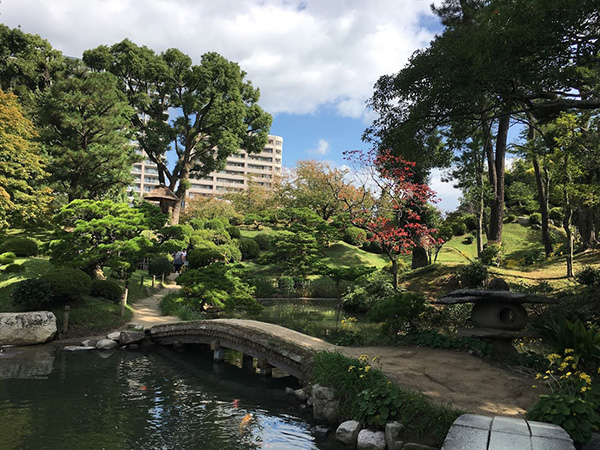
Before visiting Japan let’s learn about them and make your visit happy and more fun.
ニュージーランドから日本に訪問する生徒さん向けの情報ページです。「ツアーバンク」では、福岡へホームステイされる生徒さんへ、日本の文化やマナーについて書かれた冊子をお配りしています。このページには日本語訳も掲載しているので、ステイ先となるご家族の方は、ぜひ相互理解のためにも目を通してみてください。
HOME STAY
- 1) Respect your homestay family
- All the families are looking forward to having you. They try to make you happy and fun.
Respect your homestay family and follow your host family rules, such as change your slippers at toilet etc. If you don’t understand how to do it ask your family. - 2) Communication
- First, try to use Japanese words that you know. Even they don’t look understanding English well do not give up communicating with them. Use dictionary, writing words, which is quite effective. Sometimes Japanese are not familiar with your intonation. Try to use body language, facial expression, etc.
- 3) Bath House ? there are two rooms.
- One is the place you take off your cloths. The other one is you take shower.
Usually Japanese shower is put very low position, but it has long hose. You can take handle and take shower wherever you like. If you want to keep it high position you may find a hook on a higher position. Most Japanese shower is located out of the bath tab.
The bath tab is quite deep. After washing yourself Japanese go into the bath tab to relax and warm up the body. If you don’t like Japanese way you don’t have to.
But make sure not to wear anything when you go into a bath tub. That is not a swimming pool. - 4) Toilet
- Many Japanese houses have a western style toilet now, but some of them are very sophisticated ones.
You might find a lot of buttons on it. If you don’t understand it please ask your host family. Some buttons are for washing shower and some are for music or fragrance.
Just make sure not to push the buttons unless you seat on a toilet. - 5) Food
-
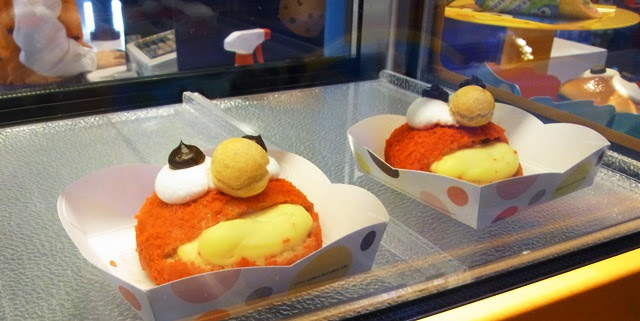
Please try a bite even it looks weird.
I guess you may find a lot of strange behavior and weird customs at home and school.
I hope you could enjoy such strangeness and weirdness while you are in Japan.
SCHOOL MANNER
- 1) FOOD
- There is no tea-break at Japanese school. All the students don’t allow to bring any food and snacks to the school. Please follow this rule when you are in a Japanese school.
- 2) LUNCH
-
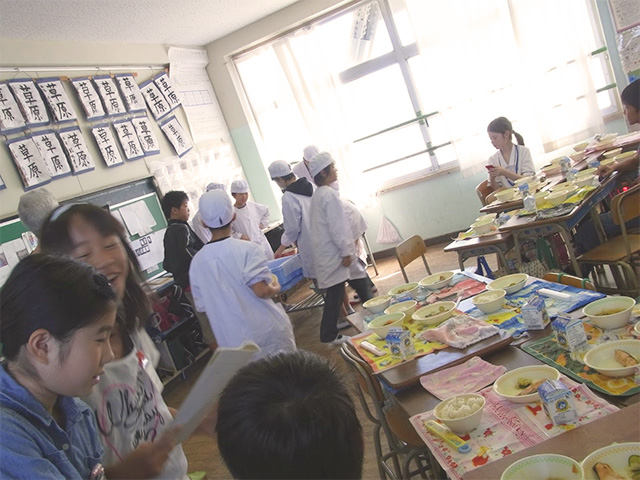
All the people at the school are provided a school lunch. They will serve by their own and have it together in a class room with saying “Itadakimasu” Do not start eating until all the class mates are ready.
- 3) Class
-
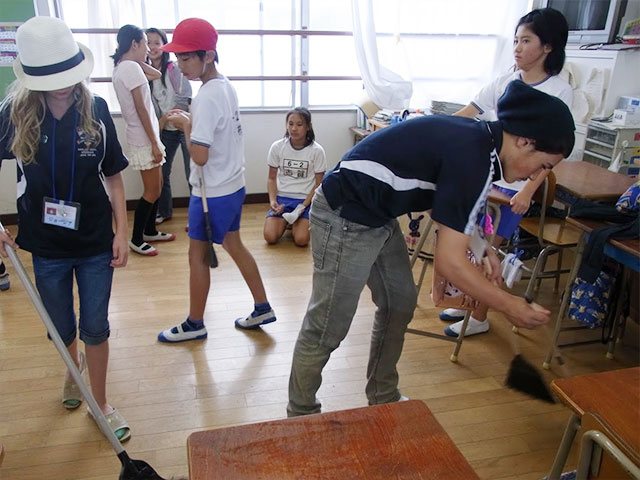
During a class they don’t allow to drink as well. There is a 5-minutes break between a class for drinking and toilet.
- 4) CLEANING
- They have a cleaning time after lunch. Try to help your class mates.
- 5) SHOES Change
-

When you enter a school building change your shoes to indoor slippers. You will put your out door shoes at a shoe shelf. When you go out to a ground make sure to change your shoes.
- 6) TRAFIC RULE
- When you come to the school you may be with your host students. I would like to make sure that when you see a red sign at a traffic light make sure to stop and wait until next green sign. Japanese green sign last long enough to cross the road not like NZ one. Do not cross the road with a red sign and hit by a car.
Japan trivia
Vending Machines
In Japan, there are about 5.5 million vending machines. That calculates to at least 4 vending machines per 100 individuals, and in the cities about 1 per 30.
You can get various things, such as juice, flowers, toys, noodles, eggs, and fishing bait. Some are so unique that you can get vegetables, curry rice (packaged with solid fuel for cooking), toasted sandwiches, automatic personal card maker, and so on.
The purpose of vending machines is not only for selling items but also for confirming the place and for providing drinks in emergencies. When we have natural disaster such as earthquakes vending machines will provide drinks free.
Eating manner
Before eating, Japanese people say "itadakimasu," a polite phrase meaning "I receive this food." This expresses thanks to whoever worked to prepare the food in the meal.
After eating, people once again express their thanks for the meal by saying "gochiso sama deshita," which literally means "it was quite a feast."
Shinkansen
Running at speeds of up to 320 km/h, the shinkansen is known for Punctuality (most trains depart on time to the second), Comfort (relatively silent cars with spacious, always forward facing seats),
Safety (no fatal accidents in its history) and Efficiency.
300km/h is the maximum speed under a current regular operation. The train itself has an ability to raise the speed up to 320km/h. Under a test operation the train raised its speed up to over 400km/H
Under the sea tunnel: Kanmon tunnel and Seikan tunnel
- Kanmon tunnel : Between (Kyushu island and Honshu island): Tunnel of 18.7km ? under the sea part ? 880m (less than 1km) It was completed in 1942 about 75 years ago.
- Seikan tunnel: Between Hokkaido and Honshu Island. 53.85 km railway tunnel. The longest tunnel under the sea. It was completed in 1988.
Train manner - When you get on the train
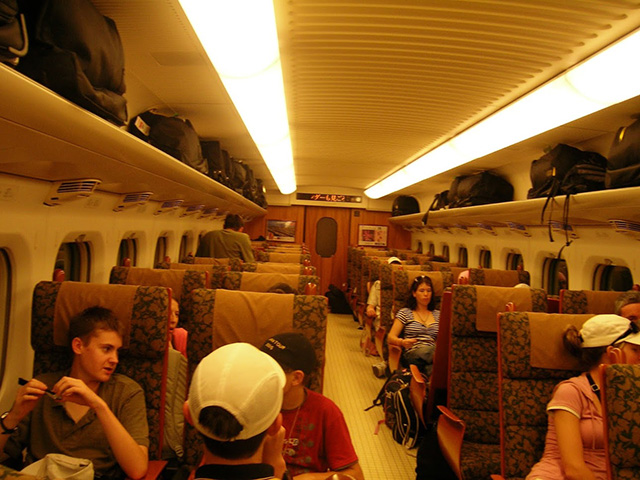
On the platform, you should wait in two to four lines until the train comes. When your train arrives you should let the disembarking passengers through first, then you get on the train. Do not push and do not rush. The trains would not stop very long, but you will have enough time to get in. You will realize that one minute is enough time to get out and get in the train in Japan.
Even if you miss the train don't worry as the next one will be coming within five to ten minutes.
However when you get off the train, make sure to be ready for getting off the train when you hear the announcement of the conductor.
HOME STAYホームステイ
- 1.ホストファミリーへの敬意
- ホストファミリーはあなたを迎えるのを楽しみに待っています。どうやって喜ばせようか考えています。ホームステイ先のご家族を尊重し、家の中での家庭のルールなどにも従いましょう。もしわからないときは尋ねましょう。
- 2.コミュニケーション
- まず、知っている日本語を使ってみましょう。相手が英語をわからない素振りをしても、対話するのをあきらめないでください。辞書を使ったり紙に書いたりするのは大変有効です。日本人はあなたのイントネーションに慣れていないこともあります。体や表情を使ってコミュニケーションを取ってみましょう。
- 3.お風呂
- お風呂はふたつの部屋になっています。ひとつは脱衣所で、もうひとつはシャワー室です。一般的に、日本のシャワーは低いところに備えてありますが、長いホースがついています。シャワーはハンドルを持って好きなとこらから体に掛けることができます。高いところに備えたければ、高いところにフックがあります。日本のシャワーは湯船の外にあります。日本の湯船はかなり深いのが特徴です。体を洗った後、日本人は湯船に入りリラックスして体を温めます。もし、日本式が好きでなければ、そのとおりにする必要はありません。ただ、湯船につかるときは、プールではないので何も着ないようにしましょう。
- 4.トイレ
- 多くの日本のお宅は西洋式のトイレを備えています。また、先端的なトイレも多くあります。もしかすると、たくさんのボタンがついたトイレがあるかもしれません。もしわからなければ、ホストファミリーに聞いてください。あるボタンはおしりを洗うためのシャワーです。また、あるボタンは音楽や香りの出るものもあります。なお、便座に座っていない状態でボタンを押さないようにしましょう。
- 5.食べ物
- 珍しい見た目の食べ物でも一口は食べてみましょう。ホームステイや日本の学校では、不思議な振る舞いやユニークな習慣がたくさん見つかるとことでしょう。日本文化の珍しさ、不思議さをたくさん楽しんでもらえればと思います。
SCHOOL MANNER学校でのマナー
- 1.食べ物
- 日本の学校にはティーブレークがありません。生徒は食べ物やスナックを学校に持参することは禁止されています。日本の学校では現地の決まりに従いましょう。
- 2.昼食
- 昼食は、全校生徒に学校給食が提供されます。生徒が自分たちで給仕をし、教室で“いただきます”と言って一緒に食べます。クラスの全員の準備ができるまで勝手に食べ始めてはいけません。
- 3.クラス
- 基本的に、授業中は水を飲むことも禁止されています。授業の間に5分休みがありますので、その間にトイレと水分補給を済ませる用意をしましょう。
- 4.掃除
- 昼食の時間の後、もしくは休み時間の後、掃除時間があります。クラスメイトのお手伝いをしましょう。
- 5.靴の履き替え
- 学校の建物内では上靴に履き替えます。玄関の靴箱に外靴を入れておきます。運動場に出るときは、外靴に履き替えます。
- 6.登校までの道のり
- 登校する際、赤信号では必ず止まるようにしましょう。信号が緑に変わるまでは待ちましょう。日本の青信号はニュージーランドの信号と違って道を渡り切るのに十分なくらい長いです。赤信号で道を渡って車にひかれないようにしましょう。
Japan trivia日本のトリヴィア
自動販売機
日本には全国でおよそ550万台の自動販売機があります。これは100人に対して4台ある計算で、都市ではおよそ30人に1台の割合です。
自動販売機ではジュースだけでなくお花、おもちゃ、カップ麺、卵、釣り餌などいろいろなものが買えます。珍しいものと言えば、野菜やカレーライス、サンドイッチなどがあげられます。自動販売機の設置目的は物を売るだけではなく、緊急の場合の位置確認と飲み物の提供にあります。地震などの自然災害が起きた場合、自動販売機は飲み物を無料で提供します。
食事マナー
食事をはじめる前に、日本人は「いただきます」と言います。「この食事をお受けします」の丁寧な言い方です。食事を準備してくれた人が誰であれ、感謝を示す表現です。食事を終えたら、「ごちそうさまでした」と食事に感謝をします。これは「ご馳走でした」という意味です。
新幹線
最高速度、時速320キロで走る新幹線は、正確な運行、快適さ(広さと静かさなど)安全性、効率性において世界に誇るものです。現在、実際の運行では最高時速は300キロに抑えられていますが、320キロまで速度が出せます。テスト運行では400キロまでスピードアップできるとのことです。
海底トンネル:関門トンネルと青函トンネル
- 関門トンネル:九州―本州間 18.7㎞で実際の海底は880m。1942年に完成しました
- 青函トンネル:本州―北海道間 53.85㎞で最長の海底トンネル。1988年に完成しました
列車に乗るときのマナー
プラットフォームでは列車が入るまで2~3列に並んで待たなくてはなりません。列車が到着したら、先に降りる乗客を通し、それから列車に乗り込みましょう。押したり、走りこんだりしてはいけません。列車は長く止まりませんが、乗るのに十分な時間はあります。ほんの一分の停車でも、列車の乗り降りに十分な時間であることが分かるでしょう。
例え乗り損なったとしても、次の列車は5~10分後にはやってきますので、心配いりません。ただ、列車から降りるときは、車掌の車内アナウンスがあったら下りる準備をするようにしましょう。



